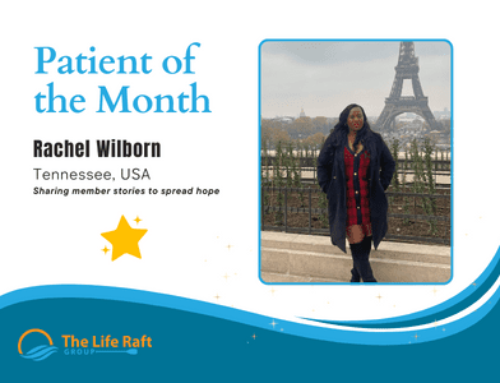By Jerry Call, LRG Science Coordinator
& Jim Hughes, Clinical Trials Coordinator
The Clinical Trials section of the website is database-driven. There are many trials recruiting, ongoing or completed that were specifically for GIST and GIST only. In addition, there are some trials that specifically allow or allowed GIST. The LRG is currently tracking over 100 trials that are or might be of interest to GIST patients.
A certain degree of complexity is inherent with large amounts of information. Here are some tips on using the new database. If you need more help, you can always contact LRG Science Coordinator Jerry Call or LRG Clinical Trials Coordinator Jim Hughes.
All trial lists are sorted to try to put the most relevant trials at the top of the list. In order to do this we list all trials that are specifically for GIST and only GIST before trials that are for GIST but allow other cancers (such as GIST and sarcoma) and we list trials that allow all solid tumors last (typically phase I trials). In addition, we sort the list based on trial phase. Trials in later phases appear before trials in earlier phase, e.g., phase III trials appear before phase I trials. After that trials are sorted by drug name.
The clinical trial database can be divided into five basic components.
- The “Main Trial Page – This is the starting place for looking for a trial or just finding information about trials in general. There are a number of links with lots of information about how to navigate clinical trials. In addition, PDF versions of clinical trial information can be downloaded for those that prefer to print out trial information. In addition, the bottom portion of the page (make sure to scroll to the bottom) repeats the navigation links that appear at the top of all of the clinical trials pages and provides an explanation of what they do.
- The “Search Trials” page – This is an advanced search page that lets you create searches that are more complex than the predefined searches. For example, if you wanted to find the trials for all of the HSP90 inhibitors that we are tracking, you could do that from this page. The resulting list would display the trials along with all of the sites. From this list you can follow the links to more detailed information about the trial or trial sites as well as a link to the very detailed information in the clinicaltrials.gov database (follow the “NCT” link).
- The Predefined Searches – The links in the second line at the top of the page are links to predefined searches. These include:
- A link that returns all GIST trials that are testing a new drug or drug combination as first-line therapy. The hope with first-line trials is that they will be able to improve upon Gleevec as the first treatment GIST patients receive (after surgery). Currently there are 5 trials listed with another that is on temporary hold pending an internal review.
- A link for trials for patients who are resistant to Gleevec and/or Sutent. This is probably the most popular trial search.
- A link to “All Trials” – This returns every trial in the database including older trials that have been completed. We include older trials so that users can see the key trials in GIST.
- A link to all “Recruiting” trials. This list combines First-line, Gleevec/Sutent resistant and Preventative trials.
- A link to “Preventative (Adjuvant) Treatment” trials. Note that most of these trials are no longer recruiting. Neoadjuvant trials are also included in this search.
- A link to the “Clinical Trial Site List” – This list tracks several hundred sites.
- A link to the “Drug Watch List” – This page is the place to go if you just want more information about a particular drug. The list itself shows the various names for the drug, the manufacturer and the drugs known targets. From this list you can follow links to detailed information about each drug. In addition to the basic information about the drug, this page has links to further information, each trial with this drug that we are tracking, and a link to trial results if available. If the drug is approved, the links area will lead you to the manufacturer’s drug page, financial assistance plans, prescribing information and more. In addition, there are links at the bottom of the page to predefined searches for the drug in clinicaltrials.gov (good for trials), ASCO (good for trial results) and Pubmed (good for general information). You can also get to the same drug information by clicking on the drug link near the top of each detailed trial record.
Why do we have a standalone database for GIST clinical trials?
There are now over 100 trials related to GIST in our database. While we use ClinicalTrials.gov as a key source of our data, there are a few reasons why an LRG database is a good tool for GIST patients. In a broad database like clinicaltrials. gov you may encounter issues like:
- A trial is too broadly classified as GIST
- Relative articles for sarcoma or solid tumors would not be listed in a search for GIST
- Some trials are simply not listed
- Site information is missing
The LRG database has already factored in these issues and does the background research for you. Each search you do is focused on GIST.




